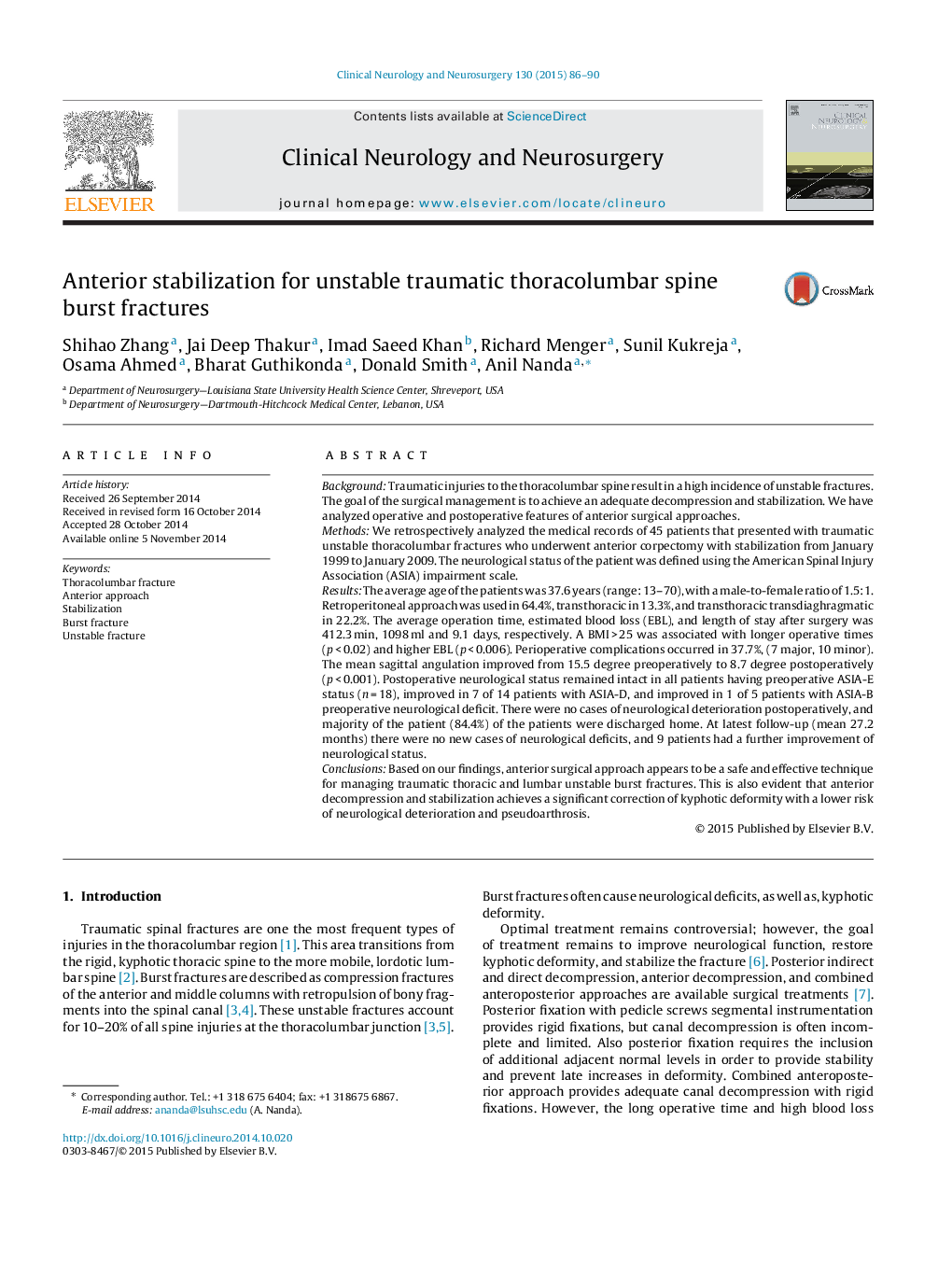| کد مقاله | کد نشریه | سال انتشار | مقاله انگلیسی | نسخه تمام متن |
|---|---|---|---|---|
| 6006437 | 1579692 | 2015 | 5 صفحه PDF | دانلود رایگان |
- The results of anterior decompression and fusion for unstable thoraco-lumbar burst fractures are presented.
- Preoperative and postoperative clinical and radiological findings were evaluated.
- Anterior fusion techniques were associated with favorable outcomes.
- Anterior corpectomy and fusion significantly improved the sagittal angulation.
BackgroundTraumatic injuries to the thoracolumbar spine result in a high incidence of unstable fractures. The goal of the surgical management is to achieve an adequate decompression and stabilization. We have analyzed operative and postoperative features of anterior surgical approaches.MethodsWe retrospectively analyzed the medical records of 45 patients that presented with traumatic unstable thoracolumbar fractures who underwent anterior corpectomy with stabilization from January 1999 to January 2009. The neurological status of the patient was defined using the American Spinal Injury Association (ASIA) impairment scale.ResultsThe average age of the patients was 37.6 years (range: 13-70), with a male-to-female ratio of 1.5:1. Retroperitoneal approach was used in 64.4%, transthoracic in 13.3%, and transthoracic transdiaghragmatic in 22.2%. The average operation time, estimated blood loss (EBL), and length of stay after surgery was 412.3 min, 1098 ml and 9.1 days, respectively. A BMI > 25 was associated with longer operative times (p < 0.02) and higher EBL (p < 0.006). Perioperative complications occurred in 37.7%, (7 major, 10 minor). The mean sagittal angulation improved from 15.5 degree preoperatively to 8.7 degree postoperatively (p < 0.001). Postoperative neurological status remained intact in all patients having preoperative ASIA-E status (n = 18), improved in 7 of 14 patients with ASIA-D, and improved in 1 of 5 patients with ASIA-B preoperative neurological deficit. There were no cases of neurological deterioration postoperatively, and majority of the patient (84.4%) of the patients were discharged home. At latest follow-up (mean 27.2 months) there were no new cases of neurological deficits, and 9 patients had a further improvement of neurological status.ConclusionsBased on our findings, anterior surgical approach appears to be a safe and effective technique for managing traumatic thoracic and lumbar unstable burst fractures. This is also evident that anterior decompression and stabilization achieves a significant correction of kyphotic deformity with a lower risk of neurological deterioration and pseudoarthrosis.
Journal: Clinical Neurology and Neurosurgery - Volume 130, March 2015, Pages 86-90
